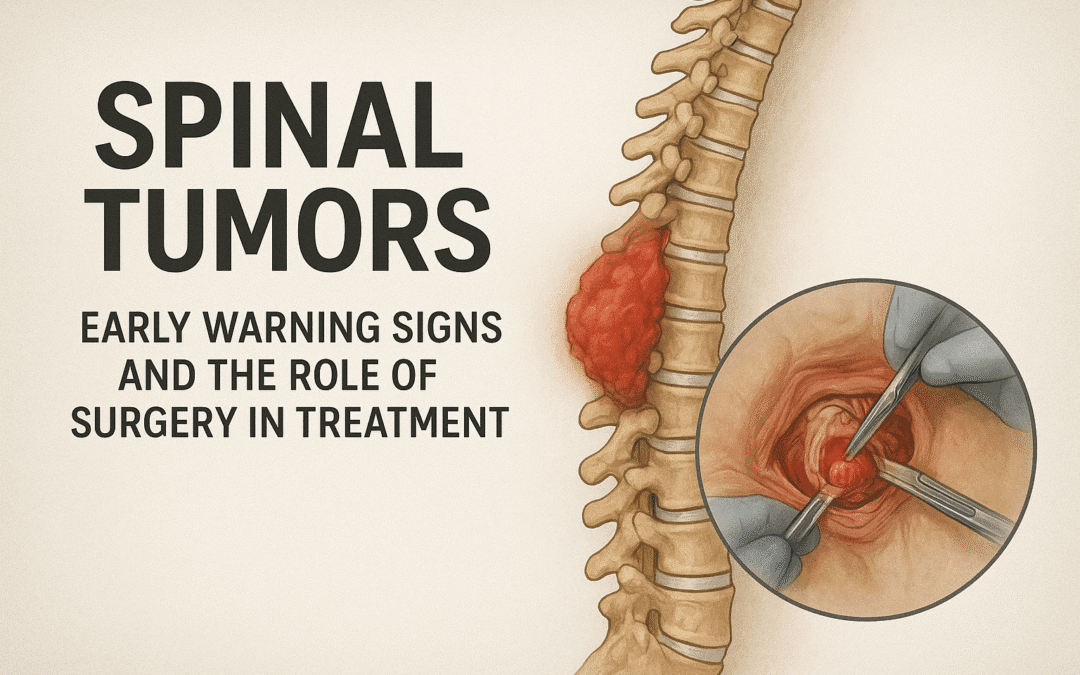Understanding Spinal Tumors
Spinal tumors are abnormal growths that develop within or around the spinal cord and vertebrae. They can be benign (non-cancerous) or malignant (cancerous), affecting the spinal nerves and bones. These tumors can originate in the spine (primary spinal tumors) or spread from other parts of the body (metastatic spinal tumors). Early detection is critical to prevent permanent spinal cord damage.
Types of Spinal Tumors
Spinal tumors are classified based on their location within the spine:
Intramedullary Tumors – Occur inside the spinal cord, such as astrocytomas and ependymomas.
Intradural-Extramedullary Tumors – Develop within the spinal canal but outside the cord, like meningiomas and schwannomas.
Extradural Tumors – Found outside the spinal canal, often involving vertebrae and commonly metastatic.
Understanding the type of tumor helps determine the best treatment strategy, including the role of spine surgery.
Early Warning Signs of Spinal Tumors
Recognizing early symptoms is crucial for timely treatment. Common warning signs include:
Persistent Back Pain – Especially pain that worsens at night or doesn’t improve with rest.
Numbness or Tingling – Loss of sensation in arms, legs, or torso.
Weakness or Difficulty Walking – Muscle weakness or imbalance.
Loss of Bladder or Bowel Control – A serious symptom indicating spinal cord compression.
Paralysis or Coordination Issues – May develop in advanced stages.
These symptoms often resemble common spine conditions, but prolonged or progressive signs should prompt medical evaluation.
Diagnosis of Spinal Tumors
An accurate diagnosis requires a combination of MRI scans, CT imaging, and biopsy to identify the tumor’s type and location. Neurological assessments help evaluate spinal cord function. Early diagnosis improves surgical success and recovery outcomes.
Role of Surgery in Spinal Tumor Treatment
Surgery is often the cornerstone of spinal tumor treatment. The goals include:
Removing the Tumor Completely while preserving spinal stability.
Relieving Spinal Cord Compression to restore neurological function.
Stabilizing the Spine using fusion or instrumentation when needed.
Minimally invasive spine surgery techniques now allow for faster recovery and less postoperative pain. In cases where complete removal isn’t possible, radiation therapy or chemotherapy may complement surgical management.
Rehabilitation After Surgery
Postoperative rehabilitation plays a vital role in recovery. Physiotherapy, pain management, and regular follow-ups help patients regain mobility and strength. Emotional support and lifestyle changes ensure long-term success and reduced recurrence risk.
When to See a Spine Specialist
If you experience persistent back pain or neurological symptoms, consult a spine specialist in Hyderabad promptly. Early intervention can prevent irreversible spinal cord injury and improve quality of life.
Conclusion
Spinal tumors require early recognition and timely surgical intervention to prevent permanent damage. With advancements in minimally invasive spine surgery, outcomes are now more successful than ever.
Early diagnosis, expert surgical care, and comprehensive rehabilitation together ensure optimal recovery and long-term spinal health.
For expert evaluation and treatment, consult our Dr. Sreenath Rao Jakinapally, Best Spine Surgeon in Hyderabad, specializing in advanced spinal tumor management and reconstructive spine surgery.


Recent Comments